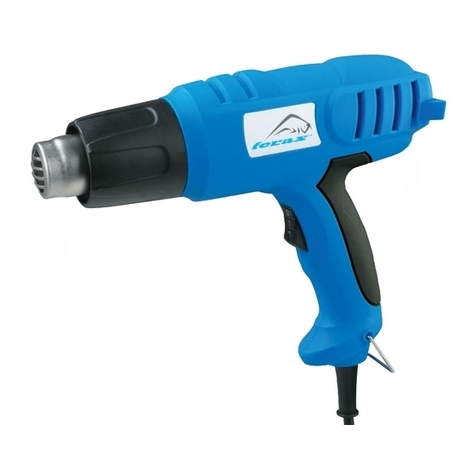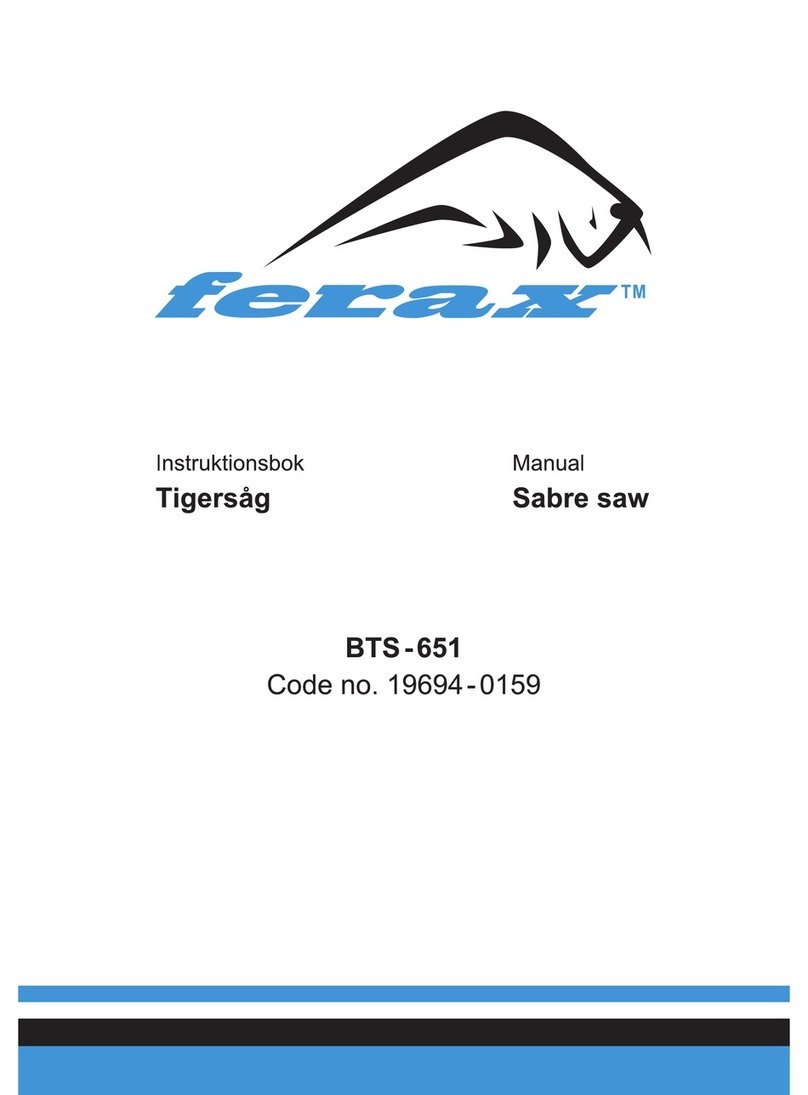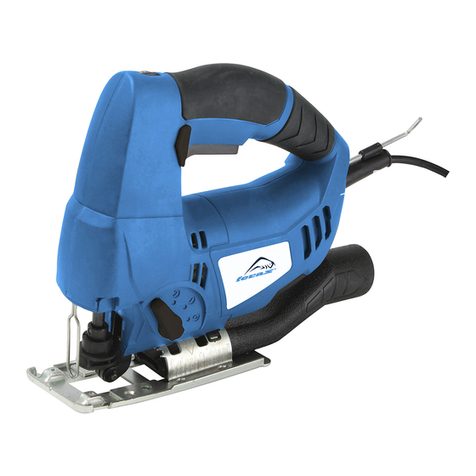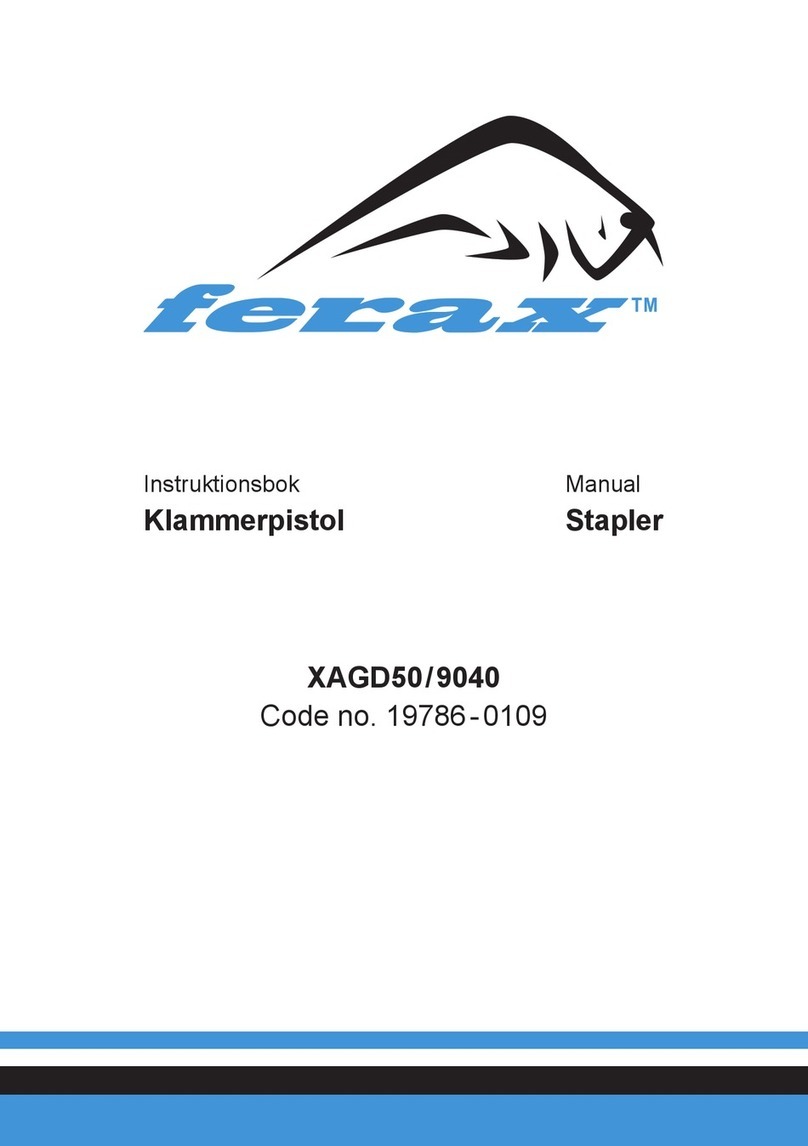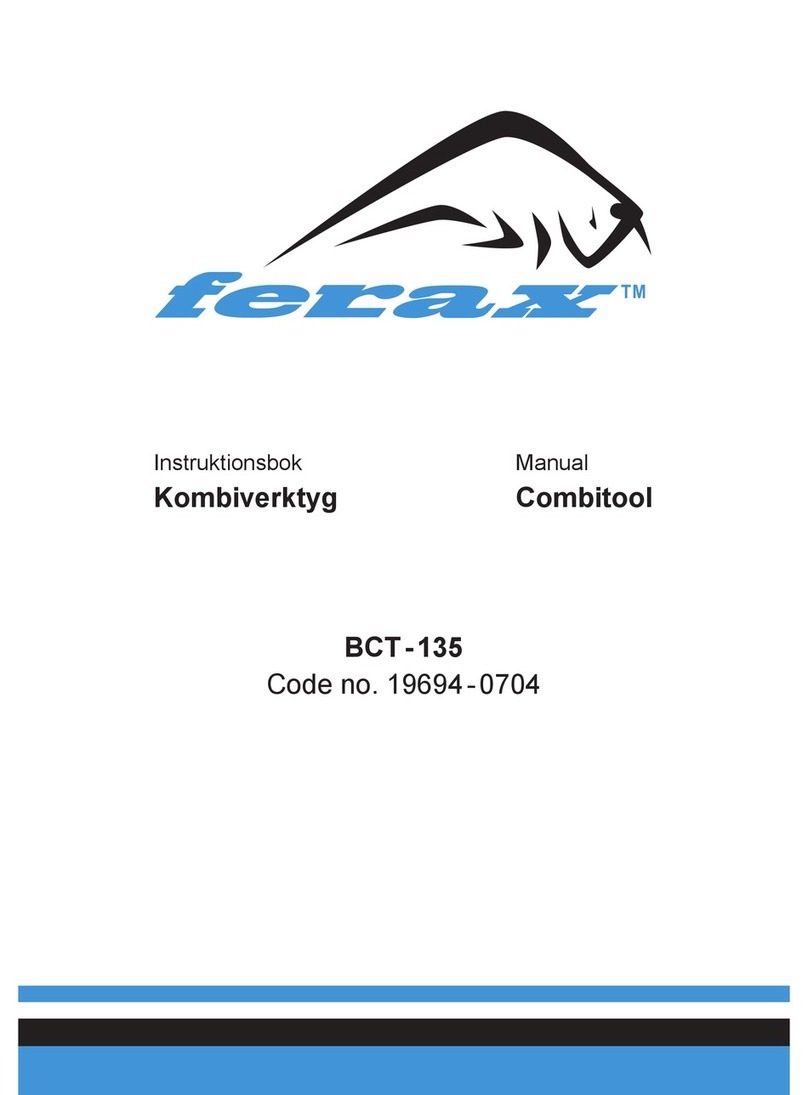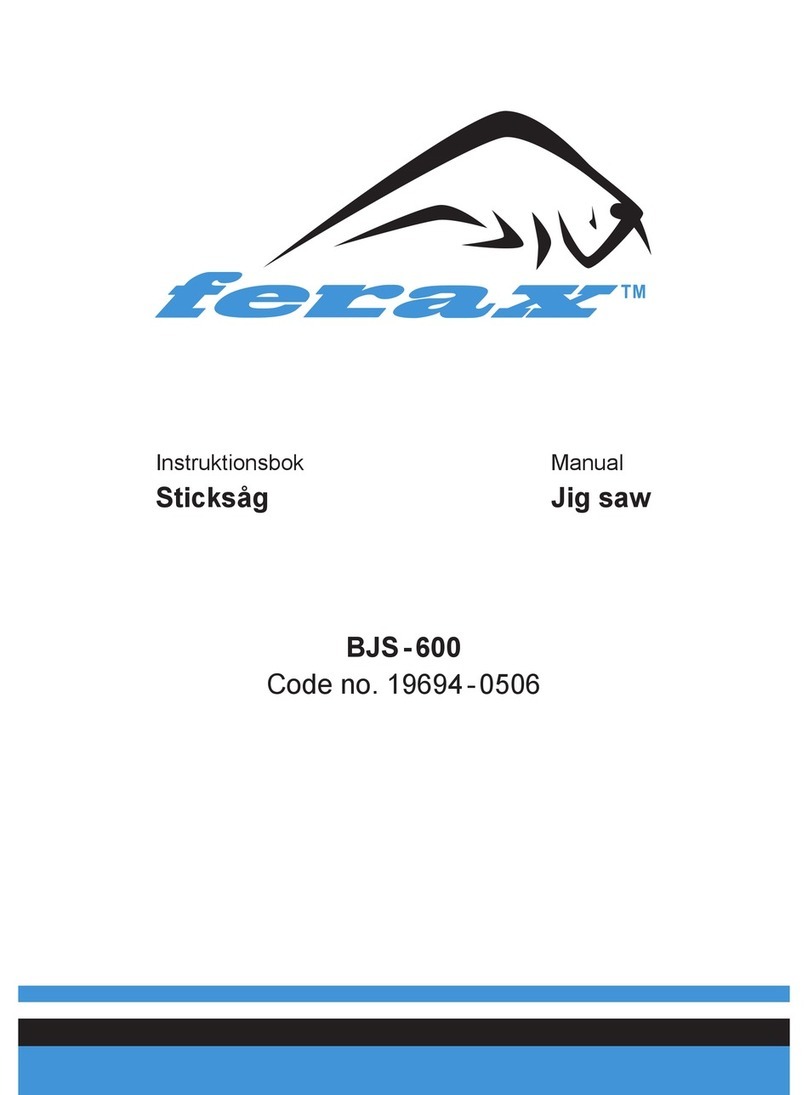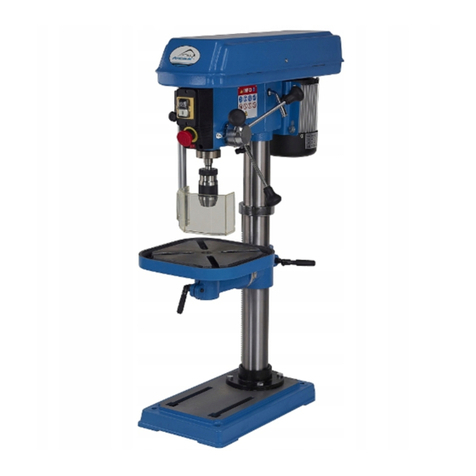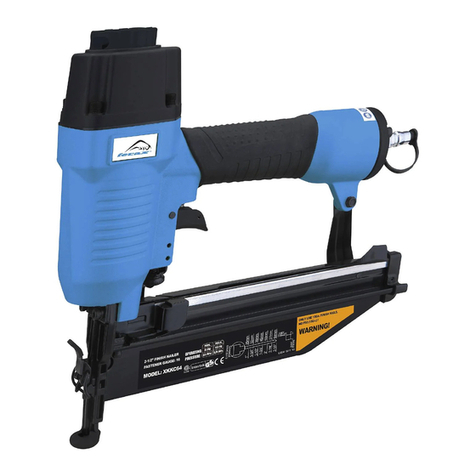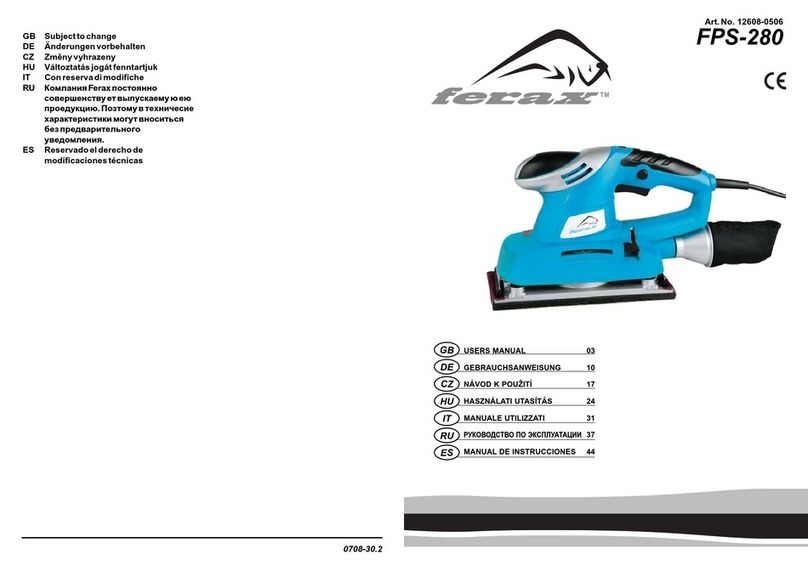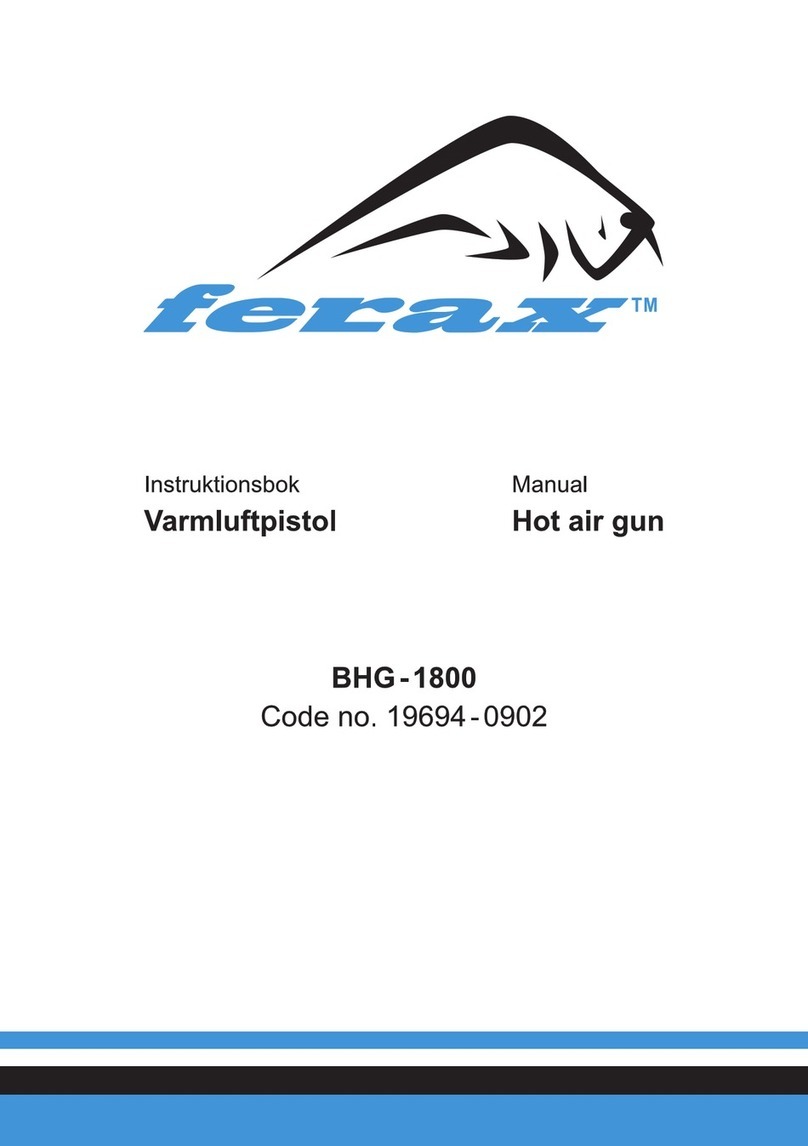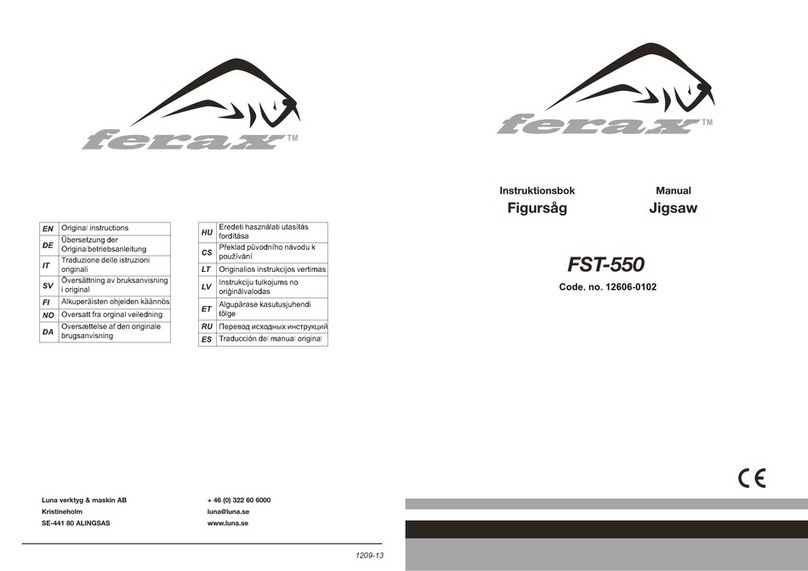Ferax 09
3. MOUNTING ACCESSORIES
Prior to mounting an accessory always unplug the tool.
Wait until the machine has come to a complete standstill and the cutter has
cooled down before replacing a cutter.
Selection of milling tools
Awide range of different millers covering an equally wide range of construction types and
quality standards is available to suit various types of processing and applications:
Millers made of high-speed steel (HSS) are suitable for applications involving the
machining of soft materials such as soft timber and plastics.
Millers made of hard metal are specifically intended for the machining of hard and
abrasive materials, e.g. hardwood or aluminium.
Mounting and removing cutters
Fig. B
Only use cutters with a shaft diameter which corresponds with the size of the collet. Only
use cutters which are suited for the maximum speed of the machine. The cutter diameter
should not exceed the maximum diameter (see ‘Technical specifications’). Never tighten
collet nut, if there is no router bit in collet; collet may be damaged.
Never apply pressure to the spindle inhibit when the motor is running! Failure
to comply with this instruction may damage the machine.
• Press down on the spindle interlock (10) and turn the nut on the collet nut (8) until it
locates in the interlock. Press and hold down the spindle interlock throughout this
operation.
•Open the nut on the collet nut (8) with the open-ended wrench by rotating it anti-
clockwise.
•Insert the shaft of the milling tool in the collet nut (i.e. chuck). The milling tool shaft
must be inserted to a depth of at least 20 mm.
• Tighten down the nut on the collet nut in a clockwise direction until the milling tool is
firmly secured.
• To replace the milling tool, unfasten the nut on the collet nut (8).
When the unit is supplied, the collet nut is mounted in the machine with a diameter setting
of 8 mm. To use milling tools with a shaft diameter of more than 6 mm, a different collet
nut can be fitted.
• To do this, turn the nut on the collet nut (8) anticlockwise until completely unfastened
then pull the collet nut out of the drive shaft.
• Install the 6 mm collet nut in the shaft and secure it by tightening down the nut (8).
GB
72 Ferax
Ajuste rápido
• Lea el valor de la escala (12).
• Extraiga los pernos de orejas (13) en el sentido contrario a las agujas del reloj.
• Gire hacia arriba el tope de profundidad con el botón regulador (12), y vuelva a leer
el valor de la escala. La diferencia entre ambos valores es la profundidad fijada de la
fresa.
Ejemplo: El valor de la escala (15) es de 2,5 en la posición cero. Después de girar el
botón regulador (12), el valor es de 1,5. La profundidad de la fresa se ha fijado por tanto
en 1,0 cm.
•Apriete los pernos de orejas (13) en el sentido de las agujas del reloj.
Ajuste de precisión:
• El botón micrométrico (16) en la parte superior sigue estando en cero. Gírelo por
completo una vez en el sentido de las agujas del reloj hasta que se vuelva a colocar
en la posición cero. La profundidad de la fresa se ha reducido ahora en 1,0 mm.
• Si fuera necesario, también es posible ajustar la profundidad de la fresa en 0,1 mm.
Ajuste mediante el tope de profundidad de revólver
El tope de profundidad de revólver (11) le permite elegir rápidamente entre tres
profundidades de corte distintas. Estas se determinan también ajustando el tope de
profundidad (14).
Para profundidades mayores se recomienda efectuar varios pases de fresado con
coeficientes de corte menores.
• Ajuste la profundidad de corte requerida girando el tope de profundidad de revólver
(11).
5. MANTENIMIENTO
Asegúrese de que la máquina no esté conectada cuando realice tareas de
mantenimiento en el motor.
Las máquinas están diseñadas para funcionar mucho tiempo con un mínimo de
mantenimiento. El funcionamiento satisfactorio depende del buen cuidado de la máquina
y de una limpieza frecuente.
Resolución de problemas
En la siguiente tabla encontrará algunas posibles causas de problemas y sus posibles
soluciones.
ES
